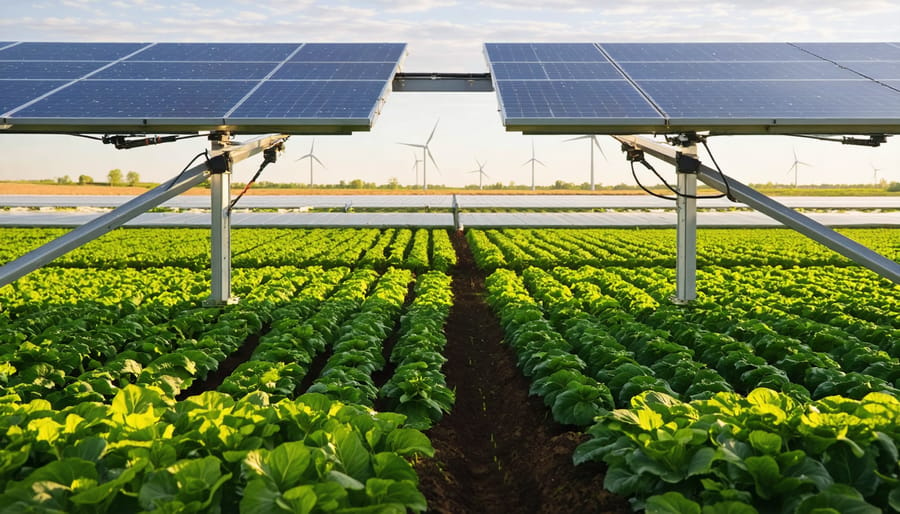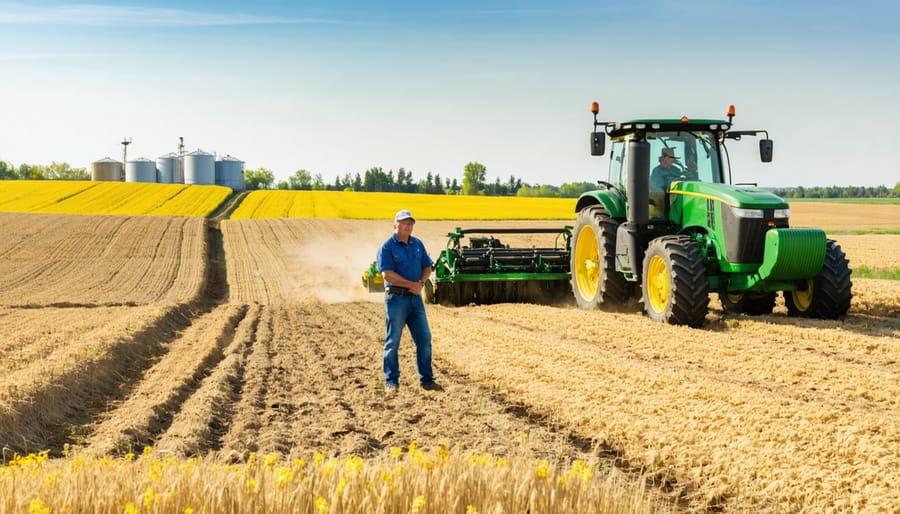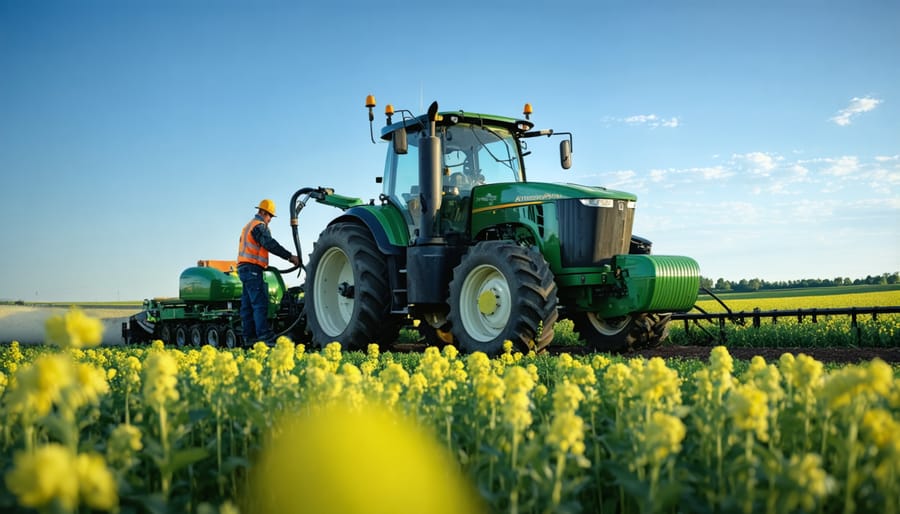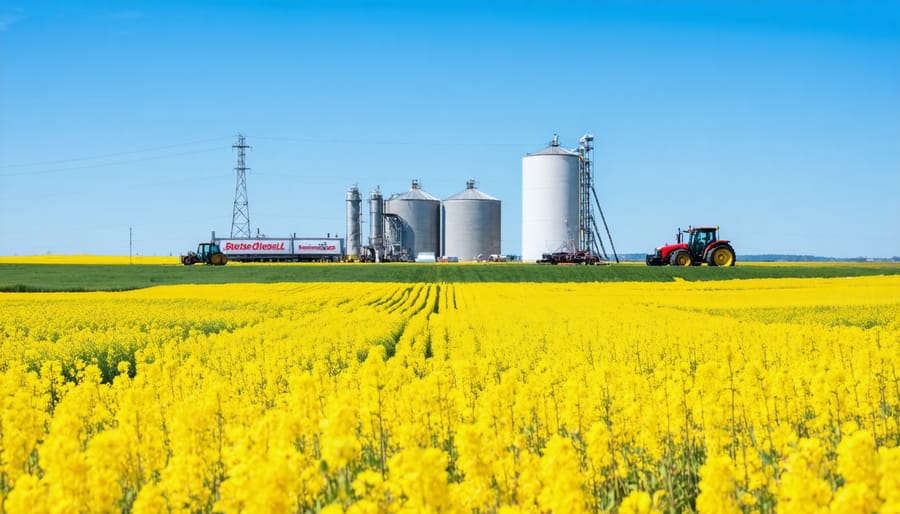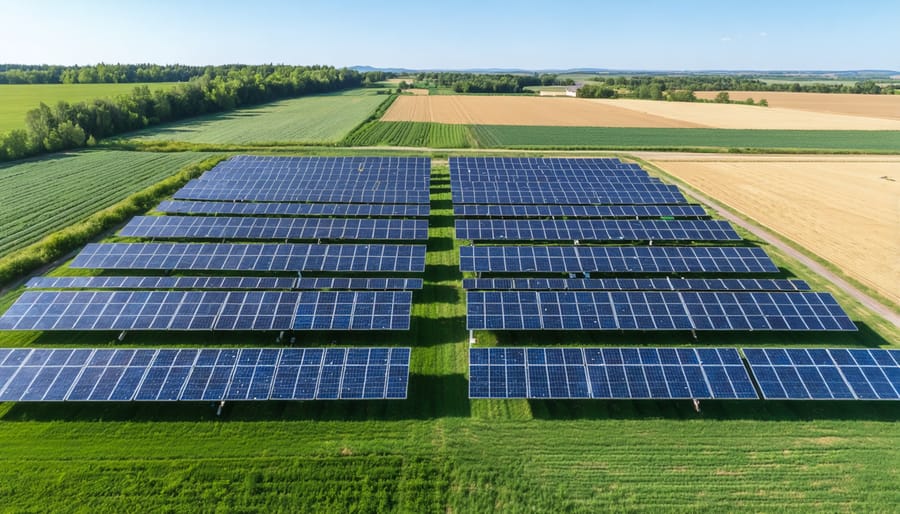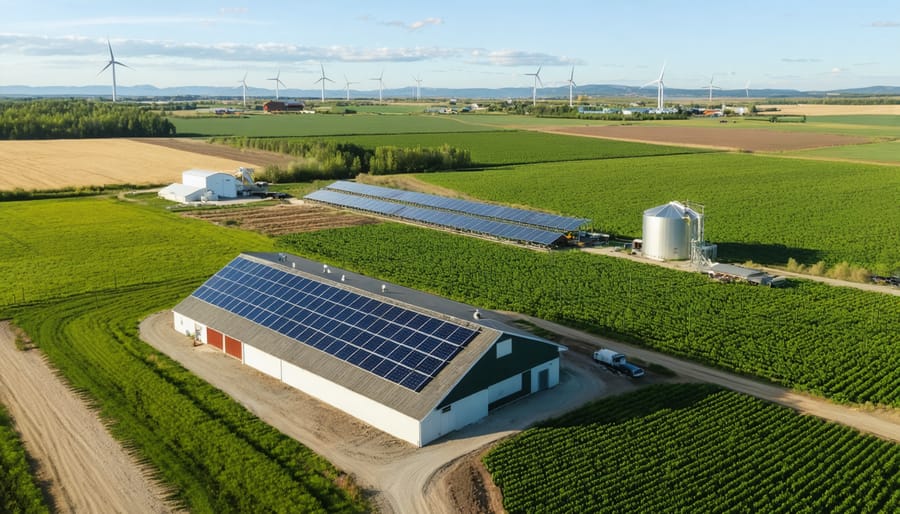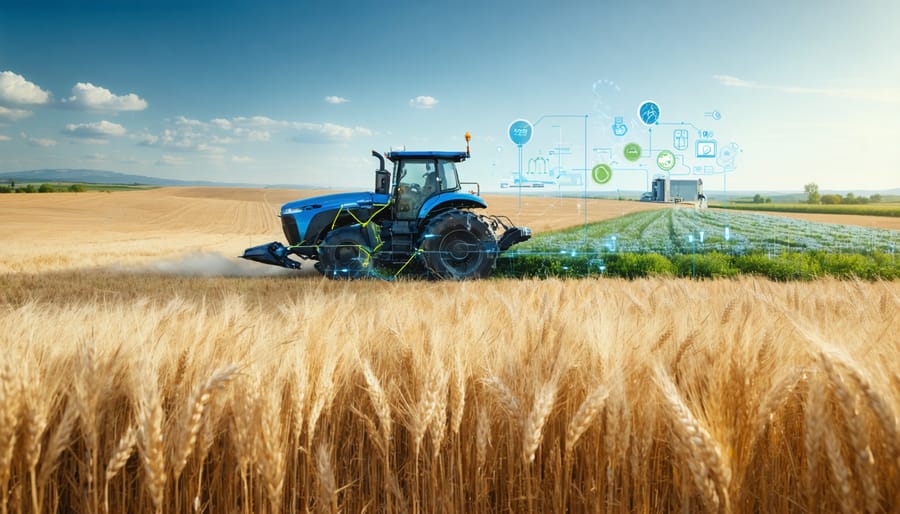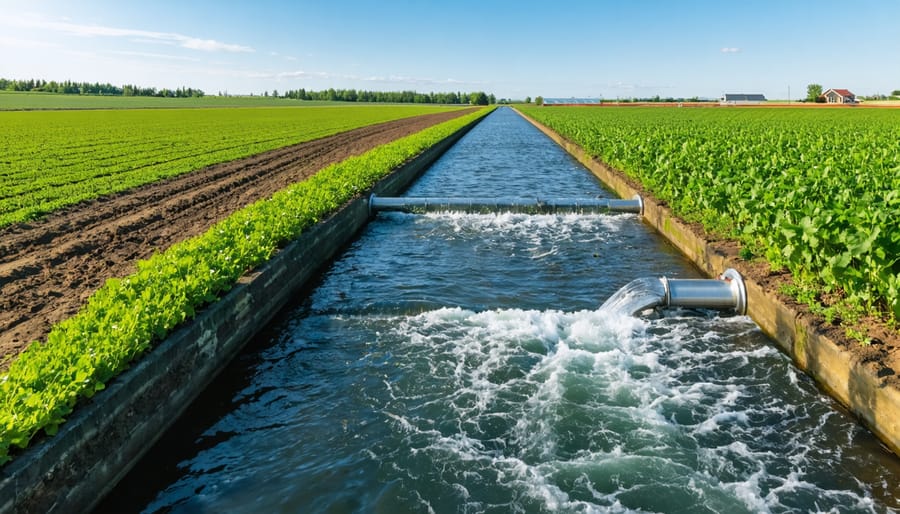Identify potential conflicts between solar panel placement and crop growth. Prioritize understanding the impact of shading on specific crops native to Alberta climates. Consult with local experts to adapt agrivoltaic systems efficiently, acknowledging how diverse plant species respond to reduced sunlight. Ensure regular site assessments to monitor ecosystem changes and solar output, optimizing both energy production and agricultural yield. For more comprehensive insights and to explore foundational principles, review What is Agrivoltaics.
High Initial Investment Costs

Understanding Investment vs. Returns
Investing in agrivoltaics, where solar panels are integrated with agriculture, often involves significant initial costs that can be challenging for Canadian farmers, particularly those in Alberta. However, understanding this investment is crucial for long-term profitability and sustainable farming. The high upfront expenses typically include purchasing solar equipment, modifying agricultural practices, and ensuring the system’s integration doesn’t impede farm operations. Yet, the potential benefits stretch far beyond these initial hurdles. By generating renewable energy, farmers might reduce electricity costs and even gain income from selling excess power back to the grid, enhancing their financial resilience. Agrivoltaics can also improve crop yields by providing partial shade, reducing water evaporation, and improving microclimates. For those knowledgeable in the field, this system is not only an investment in immediate resources but also in the future of agriculture, aligning with a commitment to sustainability and community well-being.
Case Studies: Price Barriers in Alberta
In Alberta, farmers exploring agrivoltaics face significant price barriers, primarily due to high initial investment costs. Setting up dual-use solar and agricultural systems requires substantial upfront financial resources, which can deter small and medium-sized farm owners. For instance, a study by the University of Alberta shows that while these systems can increase land productivity, the financial outlay often outweighs short-term profits. Local farmer John McKenzie notes that while he recognizes the long-term benefits such as increased crop yields and energy savings, securing financing remains a major hurdle. Community-based solutions like cooperative funding and government subsidies could offer pathways to overcome these barriers, promoting wider adoption. Sharing experiences and solutions within the farming community can empower others, fostering a supportive network to navigate these economic challenges.
Land Use Conflicts

Balancing Energy and Agriculture Needs
Balancing the dual needs of agriculture and energy generation is key for Canadian farmers considering agrivoltaics. While these systems promise shared land use, they do demand trade-offs, especially in regions like Alberta. On one hand, installing solar panels can support local energy needs and reduce carbon footprints. On the other hand, the land footprint of panels might constrain traditional farming activities. Farmers have to think creatively about these trade-offs. For example, implementing an agrivoltaic system that considers crop type and panel height can optimize both sunlight for crops and energy capture. Learning from successful Canadian case studies shows that thoughtful planning and adaptation can make agrivoltaics a viable option. Farmers can seek advice from experts to find a personalized approach that maximizes both energy output and agricultural productivity.
Canadian Land Use Policies
In Alberta, Canadian land use policies offer both opportunities and challenges for implementing agrivoltaics, a fusion of agriculture and solar energy. These policies typically aim to balance economic growth with environmental sustainability, making agrivoltaics a promising but complex venture. The province’s policies often emphasize efficient land management and renewable energy integration, encouraging innovations like agrivoltaics. However, converting agricultural land for dual purposes requires navigating zoning laws, which may not always favor unconventional agricultural methods. For farmers interested in agrivoltaics, understanding these policies is crucial. Programs supporting the transition to organic can offer insights into sustainable practices and regulations. Collaboration with local agricultural experts, who are familiar with the intricacies of land use policies, can guide farmers in adapting their operations to include agrivoltaic systems while maintaining community and environmental integrity.
Environmental Concerns
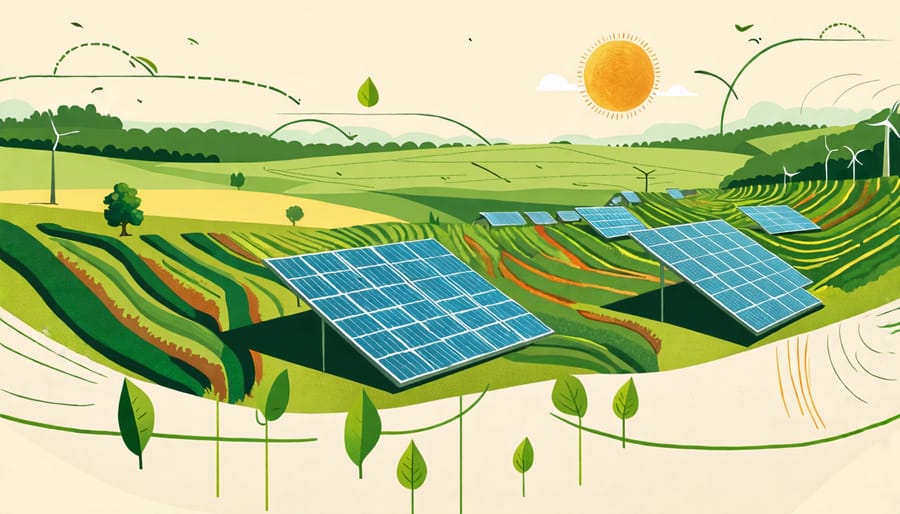
Impact on Soil and Water Resources
Agrivoltaic systems, which integrate solar panels with crop cultivation, could influence soil and water resources in ways that are both beneficial and challenging. On one hand, the shade provided by solar panels may reduce evaporation rates, potentially improving water retention. However, there are concerns about the impact on water infiltration, especially if the installation disturbs soil structure. Some Canadian farmers, particularly in Alberta, have reported changes in soil temperature, which might affect microbial activity crucial for soil fertility. Water usage may also need re-evaluation due to altered microclimates under solar arrays. Employing these systems should involve careful monitoring and adaptation to local soil and water conditions, leveraging insights from agricultural experts and local case studies to maximize benefits and mitigate potential downsides.
Implications for Biodiversity
Agrivoltaics, while promising for renewable energy and crop production, pose certain challenges for local biodiversity, particularly in the Alberta region. Solar panels can alter light and moisture availability, potentially impacting the growth patterns of native vegetation and habitats for local wildlife. For Canadian farmers, understanding these effects is crucial for integrating solar systems without adversely affecting the local ecosystem. Certain species, including birds and pollinators, might experience habitat changes or disruptions due to the presence of installations. Engaging with local ecologists and using insights from Canadian case studies can offer solutions, such as strategically placing panels to maintain wildlife corridors and ensuring that the ecological benefits of land-sharing practices are maximized. By addressing these concerns, farmers can contribute to sustainability goals while protecting biodiversity.
Maintenance and Technological Challenges
Technological Limitations
Integrating solar technology with agricultural practices, known as agrivoltaics, presents unique challenges due to technological limits. Solar panels designed for optimal energy capture may not yet be suitable for maximizing plant growth in varying Canadian climates, like those in Alberta. The dual-use design requires careful consideration to ensure that crops receive adequate sunlight, which can be complicated by the current panel designs that lack flexibility for dynamic shading needs. Moreover, the capacity to store and redistribute generated solar energy efficiently is still evolving, potentially limiting the immediate benefits of these systems. Farmers might face initial difficulties in integrating these technologies due to compatibility with existing agricultural machinery and lack of local technical support. Through collaborative efforts and ongoing advancements, these challenges can be addressed, paving the way for robust sustainable practices in Canada’s agricultural landscape.
Long-term Maintenance Demands
Agrivoltaic systems offer exciting opportunities for both energy production and agriculture, but they do come with long-term maintenance demands. Regular upkeep is crucial to ensure optimal performance of solar panels and sustain agricultural productivity. In Alberta’s variable climate, where snow and dust accumulation can impact efficiency, frequent cleaning is necessary. Farmers may also encounter technical issues such as wiring problems or inverter failures, which require timely intervention.
To mitigate these challenges, forming a community network with other agrivoltaic users can provide shared insights and solutions. Engaging with Canadian experts who understand local conditions can further enhance maintenance strategies. While these systems demand attention, the potential for increased profitability and ecological benefits make the effort worthwhile. Embracing a proactive maintenance plan can turn these challenges into opportunities for innovation and community growth.
Social and Community Resistance
Community Concerns and Misinformation
Community concerns regarding agrivoltaics often revolve around misconceptions about land use and energy reliability. Some farmers fear that installing solar power systems might reduce their agricultural productivity or alter the landscape, impacting local ecosystems. Others worry about the financial implications and maintenance challenges, considering them insurmountable obstacles for small operations. In regions like Alberta, where agriculture forms the backbone of local communities, there is resistance due to the belief that these systems conflict with traditional farming practices. However, studies show agrivoltaics can enhance land efficiency, offering a path to sustainable farming. Clear communication and evidence-based education are key to overcoming these fears and fostering acceptance.
Building Acceptance Through Education
To foster community acceptance of agrivoltaics, education and outreach must be at the forefront. Canadian farmers, especially in Alberta, can benefit from workshops that showcase local case studies where agrivoltaic systems have positively impacted farm operations. Engaging agricultural professionals through farm visits and open discussions can demonstrate practical benefits and address common concerns, such as system costs or land use efficiency. Collaborating with Canadian agricultural experts to create educational materials can further demystify this technology. By highlighting successful implementations and fostering an environment of shared learning, communities can better understand the potential for agrivoltaics in advancing sustainable agriculture.
Conclusion
As we conclude our exploration of agrivoltaics, it is clear that while these systems hold substantial promise for sustainable agriculture, they come with distinct challenges that Canadian farmers, especially in regions like Alberta, must navigate with diligence. The primary hurdle lies in balancing land use when implementing solar panels on agricultural plots. This requires careful planning to ensure that energy production does not compromise crop yield or quality. Farmers must consider the specific needs of their crops, the pattern of sunlight across their land, and the type of solar technology used to maximize both agricultural and energy outputs.
Additionally, the integration of agrivoltaics necessitates community involvement and collaboration. Engaging local stakeholders, including agricultural experts and policymakers, is vital for fostering understanding and support. This collaborative approach ensures that any potential disruptions to traditional farming practices are minimized and that the project benefits are shared equitably among community members. Moreover, farmers need access to clear, practical guidance to facilitate successful implementation.
Leveraging case studies and insights from Canadian agricultural experts can provide valuable lessons and inspiration. By prioritizing community engagement and adopting a flexible, informed approach, agrivoltaics can be an instrumental tool in enhancing the sustainability and resilience of Canada’s agricultural sector. As we move forward, embracing these challenges with a spirit of cooperation and innovation will not only benefit individual farmers but also contribute positively to our environment and local economies.




